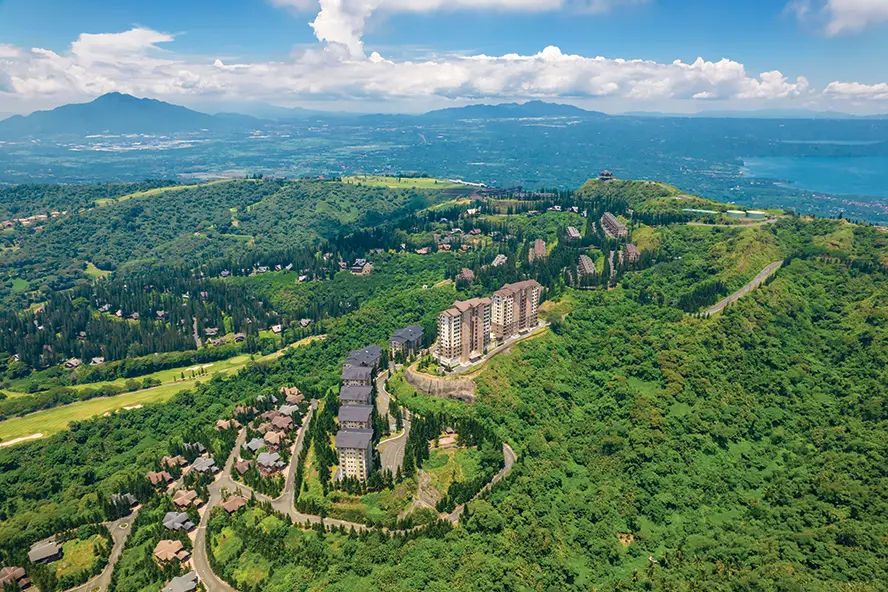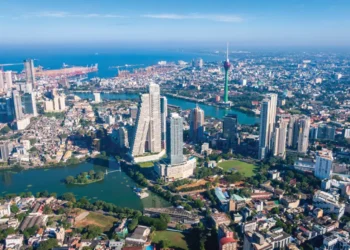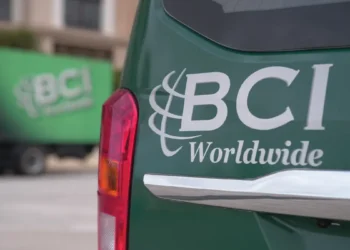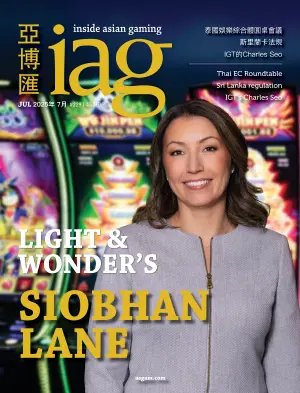Enrique K Razon Jr’s Bloomberry Resorts Corp recently opened its second Manila integrated resort, Solaire Resort North, in Quezon City. In this exclusive interview Razon’s trusted lieutenant, Bloomberry President and COO Tom Arasi, discusses the addition of Solaire Resort North to the company’s portfolio, the evolution of the Philippines gaming market and plans to open a third resort in Cavite.
 Andrew W Scott: Thanks for chatting with us Tom. Bloomberry recently opened Solaire Resort North in Quezon City. In a city like Manila with some 20 million-plus people, why specifically was Quezon City the right place for a second Solaire IR?
Andrew W Scott: Thanks for chatting with us Tom. Bloomberry recently opened Solaire Resort North in Quezon City. In a city like Manila with some 20 million-plus people, why specifically was Quezon City the right place for a second Solaire IR?
Tom Arasi: Quezon city has three million people with some of the best demographics in Metro Manila, ergo, in the Philippines. So, the catchment area surrounding Quezon City, with Quezon City as the epicenter, is northern Manila, the province of Bulacan and all the way up to Clark. And it extends all the way back down to Manila before you actually get to the more localized Solaire Entertainment City catchment. It’s a strategic location for attracting tourists, gamers and residents, and to bring to the city a vibrant venue for entertainment of all sorts.
 AWS: To what extent are the two Solaire properties connected from a management point of view and to what extent do they run independently of one another?
AWS: To what extent are the two Solaire properties connected from a management point of view and to what extent do they run independently of one another?
TA: Well, we do have some shared management, but substantially both properties have their own management teams because, as it faces the customer, for the most part the properties have to run and serve all of the needs of each guest in their particular venue. There are certain aspects of the operation where we do operate them in concert. For example, back of house, shared services, finance, IT, surveillance, procurement, things like that. We run those jointly because it makes a lot of sense to do that, and it doesn’t directly touch the customer.
On the other hand, where things can touch the customer and be extremely beneficial to the customers at both properties, we do those in sync. We cross-promote together. We have a unified loyalty program. We do certain events together. So, the strengths of both properties are enabling us to give a cohesive, superior experience to the Solaire brand customer here in Metro Manila. And by the way, in doing this, we’ve doubled our footprint. We’re now two stores instead of one, so we’ve doubled our reach and we’ve doubled our brand power.

AWS: How do you overcome that connectivity challenge in the case of Solaire Resort North given it is some distance from Ninoy Aquino International Airport (NAIA)?
TA: When you actually do the route, it doesn’t take you as long as you would think, so it’s not prohibitive. What we’ve done on a proactive, foot-forward basis is struck particular transportation relationships to make sure that we can bring our customers here quickly from the airports and effectively with shuttle buses. We’ve done deals with car services, not to mention our own fleet of cars which are primarily focused towards the premium players. They include Maybach, Range Rover, Bentley, Rolls-Royce, Mercedes, so we have very effective tools to bring them in very quickly. The other thing I would mention is that we have a little bit less international visitation coming into Solaire North than into Solaire Entertainment City, so it’s not as big a group of patrons who are coming in by air.
We are also really upping and creating new relationships for the domestic side of things for those that have to travel through travel agencies, and we are promoting all of the things that you can do in Manila and in particular in Quezon City. So again, it’s primarily a drive-to market, and it’s reasonably accessible between NAIA and even Clark to the north where it’s a pretty neat drive to come down to Solaire North.

AWS: Can you tell us about the gaming offering at Solaire Resort North? What changes have you made for the local customer base?
TA: There are a lot of similarities. The core offerings are similar. Proportionately there are more EGMs, more slots than tables at Solaire North compared to that relationship at Entertainment City. Having said that, we have the same number of EGMs at Solaire North as we do at Entertainment City, we just have fewer tables at Solaire North than we do at Entertainment City. And that is not completely, but substantially, based on the fact that we’ve set up initially for a smaller base of VIP play at Solaire North, because it’s a little bit more domestic, it’s a little bit more mass and therefore that’s going to be reflected in VIP table count. We are indeed going to have a beautiful, very effective VIP area which will be opening in September at Solaire North, but the proportions are a little bit different.
Of course, what the casino looks like at Solaire North in two or three years from now will probably be completely different from what it looks like now. These are like coral reefs: they’re dynamic, growing organisms. They change, they move, they grow. Some things die, more things are born. The same thing happens on a casino floor.
In Entertainment City we’ve probably changed out 100% of the floor seven or eight times since 2018. The other minor point I would make is it’s still predominantly baccarat in Solaire North, but the relative proportion to non-baccarat variants is a little bit lower there. In other words, there’s a little bit more proportion of non-baccarat at Solaire North but it’s not a huge difference.
 AWS: We’ve seen a marked shift in market dynamics in Asia in recent years, particularly on the back of the Macau-based junkets collapsing. To what extent has that flowed through to Manila?
AWS: We’ve seen a marked shift in market dynamics in Asia in recent years, particularly on the back of the Macau-based junkets collapsing. To what extent has that flowed through to Manila?
TA: VIP generally in Chinese-related junkets like those in Macau are much lower in importance here than they were pre-pandemic, so that’s a parallel reality that we find ourselves in. That’s not bad in the grand scheme of things, because it has forced us all to diversify more away from the China market and away from VIP into mass.
Having said that, if you go onto our floor in Entertainment City, there are a lot of Chinese speaking people at that property and it seems that a lot of them before, during and after the pandemic actually moved to the Philippines. So, inbound Chinese business is moribund, it’s just not happening, but there is still a lot of Chinese speaking going on here, so it hasn’t gone away. If you really look at the end result, we’ve basically returned to pre-pandemic profitability on the back of a much higher proportion of mass business. That’s a really good thing every way you look at it. It’s better margins, we use our balance sheet less for credit, and it’s changed our marketing. I like to say we do more finesse marketing now, strategic marketing and less muscular marketing, which was more of that VIP style: heavy on airplane flights in, heavy on big comps, heavy on big gifts, heavy on teams of hosts. Now it’s more strategic marketing. It’s more data marketing, it’s more profiling and everything else. That’s a good thing for our business.

AWS: Can you tell us a little bit about the premium mass market in the Philippines?
TA: You know, the growth in premium mass recently and as we look towards the future is of course very important here, similar to how it’s changing the landscape in Macau and in Singapore. What’s a little bit different here so far – and part of the story in premium mass and a driver – is there’s been an outsized growth in premium mass play in EGMs, in slots. That’s also an excellent thing. International is playing more on slots – a good thing. There is more rated play compared to the past, which used to be more heavily skewed towards unrated play for the international. That is also a very good thing.
So, this change and this flip to more premium mass and EGMs and rated play really plays very well into our strengths here – people, service, facilities and strategic marketing.

AWS: Looking ahead, Bloomberry has purchased some land in Cavite for a future integrated resort which was announced quite some time ago. Now that Solaire Resort North is open and that project is somewhat put to bed, do you have a timeline in mind for the Cavite project?
TA: Mr [Enrique] Razon has been extremely clear on more than one occasion that we’re going to start that project in terms of actual construction only after the ramp-up and the stabilization of Solaire North has been firmly demonstrated. In our annual general shareholders meeting, when he was asked how long he thought that stabilization would take, he said in his mind it would be approximately a two-year thing. So, he’s very clear. We’re going to bed down Solaire North making sure that its operation is juxtaposed as we want it to be with Solaire Entertainment City.
In the meantime, we’re sitting on a very nice land bank that demonstrates future growth potential and future growth rate for Bloomberry in what we have in Cavite. But we’re not sitting on our hands there. It’s 280 hectares of prime, prime land and we’re very busy and we have a dedicated team working on the engineering studies, the surveying, the horizontal infrastructure, land planning, all of the permits, the environmental compliance, all of those things are actively underway as we speak, and we will be fully prepared to press the button when Mr Razon figures it’s time to do that.
That’s going to represent an extraordinary future Bloomberry offering. It’s one hour and 15 minutes from Solaire Entertainment City and a good chunk of Metro Manila, Manila BGC, Forbes Park, all those markets that everyone really wants. I can’t think of a similarly positioned integrated resort company that’s going to have that urban context and a true world class leisure resort almost right next door to play off the entire customer journey and customer experience.

AWS: What might that Cavite IR look like?
TA: Mr Razon has quite a clear vision of what it would be. It will have all of the facilities of a luxury integrated resort: hotel, food and beverage. It will have a significant MICE component, probably will have limited retail, but think more high-end country club type facilities. It will skew more towards resort than gaming, but the gaming will still be meaningful. It will have a substantial residential component, so that’s going to give us on that particular development a different capital profile – a return of capital a little bit different in the life cycle of that asset. It will be branded Solaire. It will be the best resort in the Philippines. It will be renowned internationally. Everything that we do in Bloomberry that’s under the Solaire flag is going to have global luxury credentials. No ifs, ands or buts.
Back to the gaming, it will be midway between an urban size like we’ve done here (at Entertainment City) when compared to resorts in different parts of the world which have a small boutique type of casino that’s a little bit more than a rounding error. This will be somewhere in between in terms of casino, but the secret sauce for us is we’re going to have a beach mountain world class golf resort one hour and 15 minutes away from Metro Manila. And we’re going to be able to use that property not only on a standalone basis and on its own organic revenue production capability, but this is also going to be awesome firepower into our loyalty program and the lifetime value of our customers, because now when they’re playing at our two properties or staying here and they’re accumulating their points and their experiences, when they want something different, we’re going to be able to say, “Go to our beach mountain resort, play some golf, take the family and take visitors or have your son or daughter’s wedding there.”

We’re going to be able to offer that and it’s really going to greatly strengthen the value proposition we have for Solaire’s valuable loyalty customers.
You know, when you think about having a resort and urban properties, think a little bit about Marriott or IHG Group. The business people will go stay in business hotels or the urban context, collect their points and they’ll burn them at the resort. We’re going to have the same kind of thing but on steroids, so it’s a great prospect for us going forward.































